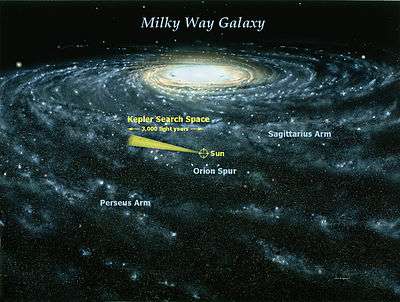Large Interferometer For Exoplanets
Large Interferometer For Exoplanets (LIFE) is a project started in 2017 to develop the science, technology and a roadmap for a space mission to detect and characterize the atmospheres of dozens of warm, terrestrial extrasolar planets. The current plan is for a nulling interferometer operating in the mid-infrared consisting of several formation flying collector telescopes with a beam combiner spacecraft at their center.[1][2][3][4][5][6]
References
- https://www.life-space-mission.com/
- Atmospheric characterization of terrestrial exoplanets in the mid-infrared: biosignatures, habitability & diversity, Sascha P. Quanz et al.,7 Aug 2019
- Direct imaging of molten protoplanets in nearby young stellar associations, Irene Bonati et al., 18 Nov 2018
- Characterizing the atmosphere of Proxima b with a space-based mid-infrared nulling interferometer, D. Defrère et al., 26 Jul 2018
- Space-based infrared interferometry to study exoplanetary atmospheres, D. Defrère et al., 21 Dec 2018
- Simulating the Exoplanet Yield of a Space-based MIR Interferometer Based on Kepler Statistics, J. Kammerer, S. P. Quanz, 17 Oct 2017
Further reading
- Exoplanet science with a space-based mid-infrared nulling interferometer, Sascha P. Quanz, Jens Kammerer, Denis Defrère, Olivier Absil, Adrian M. Glauser, Daniel Kitzmann, 9 Aug 2018
This article is issued from Wikipedia. The text is licensed under Creative Commons - Attribution - Sharealike. Additional terms may apply for the media files.

